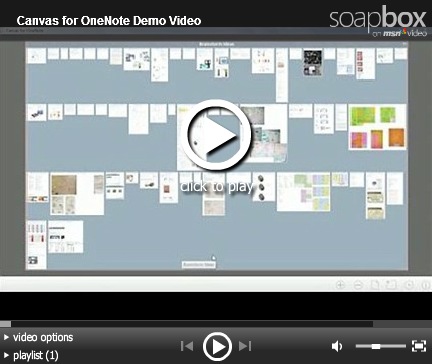Exam 70-432 TS: Microsoft SQL Server 2008, Implementation and Maintenance
Microsoft likes for its people to be certified in as many technologies as possible. Personally, I find certifications useful since they help me focus my study, but I don't think that certification = expert. It's just one part of the puzzle.
To that end, I got one of the earliest certs Microsoft had (long before I worked here) and then went on to get my MCSE and then MCDBA. Again, they are just good ways to help me round out the study I do and the real-world experience I gain on the job. So now I'm starting the process to pass this exam: http://www.microsoft.com/learning/en/us/exams/70-432.mspx
A lot of people study for a couple of weeks and then just jump in to the tests - and that's great. My friend Sean McCown just breezed in and took the test and passed it. I take a long time for my studies, since I fold them into everything else I'm doing. I find that taking longer helps it "sink in" better for me.
I thought I would share the notes I have as I go along. Normally I use this process:
- Find out what's covered on the test
- Locate those topics in Books Online and read them
- Practice (implement the feature, etc)
- Find a practice test somewhere and take it, gauge where I'm weak
- Find any extra books, especially those written for the test (if they are good) and read those
- Take the real test - and Pass!
So with all that in mind, here are the notes I've made so far - a forum link and then the topics from the test, along with Books Online links. I'll modify this list and add to it from time to time, and then post it here. If you have any comments on the test (but not the questions from it or any answers, please) feel free to comment on the article.
Forums:
http://www.proprofs.com/forums/index.php?s=85800194ae36c92bdcfd31a012b72f34&showforum=69
Requirements:
Install SQL Server 2008 and related services - file locations; default paths; service accounts
http://msdn.microsoft.com/en-us/library/ms143547.aspx
http://msdn.microsoft.com/en-us/library/cc281953.aspx
Configure SQL Server instances - sp_configure
http://msdn.microsoft.com/en-us/library/ms188787.aspx
Configure SQL Server services - configuration manager; SQL browser
http://msdn.microsoft.com/en-us/library/ms174212.aspx
http://msdn.microsoft.com/en-us/library/ms181087.aspx
Implement database mail - set up and configure
http://msdn.microsoft.com/en-us/library/ms175887.aspx
Configure full-text indexing - enable/disable, index population
http://msdn.microsoft.com/en-us/library/ms142571.aspx
Manage SQL Server Agent jobs - create and schedule jobs; notification of job execution; disable/enable jobs; change job step order; logging
http://msdn.microsoft.com/en-us/library/ms187061.aspx
Manage SQL Server Agent alerts - performance condition alerts; SQL event alerts; Windows Management Instrumentation (WMI) alerts
http://msdn.microsoft.com/en-us/library/ms191508.aspx
Manage SQL Server Agent operators - operator schedules; fail safe operator; add a new operator; notification methods
http://msdn.microsoft.com/en-us/library/ms179336.aspx
Implement the declarative management framework (DMF) - create a policy; verify a policy; schedule a policy compliance check; enforce a policy; create a condition
http://msdn.microsoft.com/en-us/library/bb510667.aspx
Back up a SQL Server environment - operating system-level concepts
http://msdn.microsoft.com/en-us/library/ms187048.aspx
Manage logins and server roles- create logins; disable/enable logins; security model (authentication mode); password policy enforcement; fixed server roles; alter logins
http://msdn.microsoft.com/en-us/library/bb510476.aspx
Manage users and database roles - user mapping; user-defined roles; fixed roles; guest, public, dbo; creating and deleting user roles
http://msdn.microsoft.com/en-us/library/ms189121.aspx
Manage SQL Server instance permissions- logon triggers; permissions vs fixed role membership; cross-database ownership chaining; impersonation
http://msdn.microsoft.com/en-us/library/ms191291.aspx
Manage schema permissions and object permissions- manage schema ownership
http://msdn.microsoft.com/en-us/library/ms190387.aspx
Audit SQL Server instances- use DDL triggers and logon triggers; C2; common criteria; login failures; event notifications
http://msdn.microsoft.com/en-us/library/ms187634.aspx
http://msdn.microsoft.com/en-us/library/bb153837.aspx
http://msdn.microsoft.com/en-us/library/ms186406.aspx
http://msdn.microsoft.com/en-us/library/cc645917.aspx
Manage transparent data encryption- impact of transparent data encryption on backups
http://msdn.microsoft.com/en-us/library/bb934049.aspx
Manage and configure databases- files, file groups, and related options; database options; recovery model; attach/detach data
http://msdn.microsoft.com/en-us/library/ms187087.aspx
Manage database snapshots- create, drop, revert
http://msdn.microsoft.com/en-us/library/ms175158.aspx
Maintain database integrity- DBCC CHECKDB; suspect pages
http://msdn.microsoft.com/en-us/library/ms176064.aspx
Maintain a database by using maintenance plans- Maintenance Plan Wizard; Maintenance Plan Designer
http://msdn.microsoft.com/en-us/library/ms187658.aspx
Import and export data- BCP; BULK INSERT; OPENROWSET; GUI tools
http://msdn.microsoft.com/en-us/library/ms162802.aspx
http://msdn.microsoft.com/en-us/library/ms175915.aspx
Manage data partitions- switching data from one partition to another; add a filegroup; alter a partition function; alter a partition scheme
http://msdn.microsoft.com/en-us/library/ms188730.aspx
Implement data compression- sparse columns; page/row
http://msdn.microsoft.com/en-us/library/cc280449.aspx
Maintain indexes- create spatial indexes; create partitioned indexes; clustered and non-clustered indexes; XML indexes; disable and enable indexes; filtered index on sparse columns; indexes with included columns; rebuilding/reorganizing indexes; online/offline
http://msdn.microsoft.com/en-us/library/ms188783.aspx
Manage collations- column collation; database collation; instance collation
http://msdn.microsoft.com/en-us/library/ms143503.aspx
Identify SQL Server service problems- DB Engine service; SQL Agent service; SQL Browser service
http://msdn.microsoft.com/en-us/library/ms143504.aspx
Identify concurrency problems- blocks, locks, deadlocks, activity monitor; relevant Dynamic Management Views
http://msdn.microsoft.com/en-us/library/ms190615.aspx
Identify SQL Agent job execution problems- proxy accounts; credentials; job history
http://msdn.microsoft.com/en-us/library/ms189064.aspx
Locate error information- error log; agent log; job execution history; event logs
http://msdn.microsoft.com/en-us/library/ms191202(sql.90).aspx
Implement Resource Governor
http://msdn.microsoft.com/en-us/library/bb933866.aspx
Use the Database Engine Tuning Advisor
http://msdn.microsoft.com/en-us/library/ms188639.aspx
Collect trace data by using SQL Server Profiler
http://msdn.microsoft.com/en-us/library/ms187929.aspx
Collect performance data by using Dynamic Management Views (DMVs)
http://msdn.microsoft.com/en-us/library/ms188754.aspx
Collect performance data by using System Monitor
http://msdn.microsoft.com/en-us/library/ms191246.aspx
Use Performance Studio
http://msdn.microsoft.com/en-us/library/bb677179.aspx
Implement database mirroring- monitoring, configuring, failover
http://msdn.microsoft.com/en-us/library/ms189852.aspx
Implement a SQL Server clustered instance- monitoring, configuring, failover
http://msdn.microsoft.com/en-us/library/ms189134.aspx
Implement log shipping- monitoring, configuring, failover
http://msdn.microsoft.com/en-us/library/bb895393.aspx
Implement replication- monitoring, configuring, failover
http://msdn.microsoft.com/en-us/library/ms151198.aspx
Published 25 February 09 07:46 by Buck Woody















.gif)















.jpg)